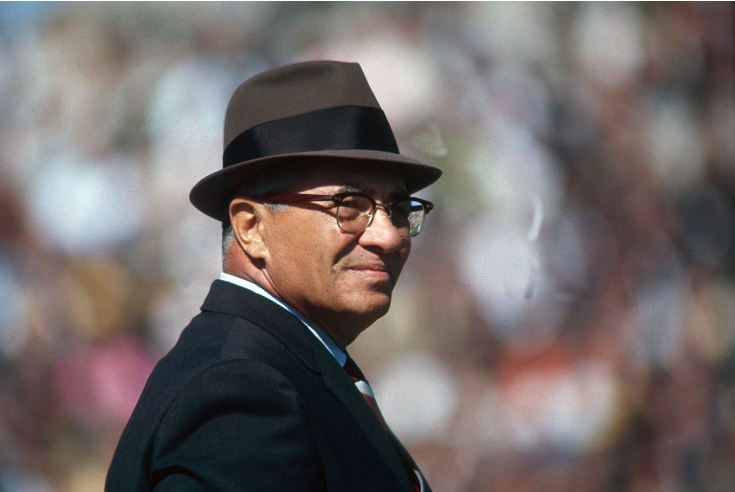Football
Football (Soccer): The World’s Most Beloved Sport

Football (Soccer): The World’s Most Beloved Sport
Football, or soccer as it is known in some parts of the world, is more than just a sport; it is a global phenomenon that transcends cultures, languages, and borders. With millions of fans worldwide, the passion for football unites people in a way that few other activities can. In this comprehensive guide, we will explore the rich history, intricate rules, major tournaments, and the enduring appeal of football. We’ll also delve into the impact of football on society and its role in shaping cultural identities.
The Origins and Evolution of Football
Early History of Football
Football’s origins can be traced back to ancient civilizations, where various forms of the game were played. The Chinese game of Cuju, the Roman game of Harpastum, and the Japanese game of Kemari are all early examples of ball games that bear similarities to modern football. However, it was in England during the 19th century that football began to take its current form.
The Birth of Modern Football
The formal codification of football began in 1863 when the Football Association (FA) was established in England. The FA’s rules standardized the game and laid the foundation for modern football. These rules distinguished football from rugby, which was developing concurrently. The introduction of standardized rules allowed the game to spread rapidly across Europe and beyond.
The Global Spread of Football
Football’s global spread was facilitated by British sailors, merchants, and workers who introduced the game to different parts of the world. By the early 20th century, football had become a major sport in many countries, leading to the establishment of national football associations and the formation of international competitions.
Understanding the Basics of Football

The Rules of the Game
Football is played by two teams of eleven players on a rectangular field with a goal at each end. The objective is to score by getting the ball into the opposing team’s goal. The team with the most goals at the end of the match wins. The basic rules of football include:
- Kick-Off: The game starts with a kick-off from the center of the field.
- Goals: A goal is scored when the entire ball crosses the goal line between the goalposts and beneath the crossbar.
- Offside: A player is in an offside position if they are nearer to the opponent’s goal line than both the ball and the second-last opponent when the ball is played to them.
- Fouls and Misconduct: Players may not use excessive force or commit dangerous plays. Infractions result in free kicks, penalty kicks, or disciplinary actions such as yellow and red cards.
Key Positions and Roles
Each player on the football field has a specific role:
- Goalkeeper: The last line of defense, responsible for preventing the ball from entering the goal.
- Defenders: Players who protect the goal by blocking attacks from the opposing team.
- Midfielders: Players who link the defense and attack, often involved in both defending and creating goal-scoring opportunities.
- Forwards: Players who are primarily responsible for scoring goals.
Major Football Tournaments
The FIFA World Cup
The FIFA World Cup is the most prestigious football tournament in the world. Held every four years, it features teams from across the globe competing for the title of world champions. The tournament’s history is filled with memorable moments, from Diego Maradona’s “Hand of God” goal to Zinedine Zidane’s headbutt in the 2006 final.
The UEFA Champions League
The UEFA Champions League is the premier club competition in European football. It features the top teams from Europe’s leading leagues competing in a knockout format. The Champions League is renowned for its high level of competition and has produced some of the most thrilling matches in football history.
The Copa America
The Copa America is the oldest international football competition, featuring national teams from South America. It has a rich history of fierce rivalries, particularly between Brazil and Argentina, and showcases some of the best talent in world football.
The English Premier League
The English Premier League (EPL) is one of the most popular and competitive football leagues globally. It features twenty teams competing in a season-long competition, with matches played home and away. The EPL is known for its passionate fans, intense matches, and high-profile players.
The Cultural Impact of Football
Football and National Identity
Football plays a significant role in shaping national identities. National teams are a source of pride and unity, often representing the hopes and dreams of their countries. Major tournaments like the World Cup and the Copa America provide a platform for nations to showcase their cultural heritage and sporting prowess.
Football and Social Change
Football has been a catalyst for social change in many parts of the world. It has the power to bring together people from diverse backgrounds and foster a sense of community. Football initiatives and foundations work towards social goals such as promoting education, health, and equality.
The Role of Football Fans
Football fans are the lifeblood of the sport. Their passion and dedication create the vibrant atmosphere that makes football matches so exciting. From the chanting and singing in the stadiums to the global fan communities online, football fans play a crucial role in the sport’s culture.
The Economics of Football
Football Clubs and Revenue
Football clubs generate revenue through various streams, including matchday sales, broadcasting rights, merchandise, and sponsorship deals. The financial success of clubs like Real Madrid, Manchester United, and FC Barcelona highlights the lucrative nature of the sport.
Player Transfers and Contracts
The transfer market is a significant aspect of football economics. Clubs invest heavily in acquiring top talent to strengthen their squads. The transfer fees for players like Neymar and Cristiano Ronaldo have reached astronomical figures, reflecting the high stakes involved in modern football.
Football’s Impact on Local Economies
Football also has a substantial impact on local economies. Matchday activities generate income for local businesses, and the construction of stadiums and football facilities can lead to urban development and job creation.
The Future of Football
Technological Advancements
Technology is transforming football in numerous ways. Video Assistant Referee (VAR) systems, goal-line technology, and advanced analytics are enhancing the accuracy and fairness of the game. Innovations in broadcasting and virtual reality are also changing how fans experience football.
Youth Development and Grassroots Football
Investing in youth development and grassroots football is essential for the sport’s future. Football academies and community programs nurture young talent and promote participation at all levels. These initiatives ensure a steady pipeline of skilled players for professional leagues.
Globalization of Football
Football’s global reach continues to expand. Leagues and clubs are building international fan bases, and there is growing interest in football from regions like Asia and North America. This globalization presents opportunities for growth and challenges in maintaining the sport’s integrity.
The Role of Women in Football
Women’s Football History
Women’s football has a rich history, with roots dating back to the late 19th century. Despite facing numerous challenges and societal barriers, women’s football has grown significantly over the years. Pioneers like Lily Parr and Mia Hamm have paved the way for future generations.
Major Women’s Football Tournaments
The FIFA Women’s World Cup and the UEFA Women’s Champions League are the premier competitions in women’s football. These tournaments showcase the incredible talent and skill of female footballers, inspiring young girls worldwide to pursue the sport.
The Growth of Women’s Football
Women’s football is experiencing unprecedented growth. Increased media coverage, sponsorship deals, and investment in women’s leagues are contributing to its rising popularity. Clubs like Olympique Lyonnais and FC Barcelona are setting new standards in women’s football.
Football and Health Benefits
Physical Fitness
Football is an excellent way to stay physically fit. It involves a combination of aerobic and anaerobic exercises, improving cardiovascular health, strength, and endurance. Playing football regularly helps in maintaining a healthy weight and reducing the risk of chronic diseases.
Mental Health
Football also offers mental health benefits. The social interaction and teamwork involved in playing football can reduce stress and anxiety. The sport promotes discipline, focus, and resilience, contributing to overall mental well-being.
Community and Social Connections
Football fosters a sense of community and belonging. Whether playing in local leagues or cheering for a favorite team, the sport brings people together, creating lasting friendships and social bonds.
Famous Footballers and Their Impact
Legendary Players
Football history is filled with legendary players who have left an indelible mark on the sport. Icons like Pelé, Diego Maradona, Johan Cruyff, and Zinedine Zidane have mesmerized fans with their skill and charisma. Their contributions go beyond the pitch, influencing football culture and inspiring future generations.
Modern Superstars
Today’s football landscape is dominated by superstars like Lionel Messi, Cristiano Ronaldo, and Neymar. These players are not only exceptional athletes but also global ambassadors for the sport. Their influence extends to fashion, media, and philanthropy, making them household names worldwide.
Rising Stars
The future of football looks bright with the emergence of rising stars like Kylian Mbappé, Erling Haaland, and Jadon Sancho. These young talents are poised to take the football world by storm, bringing fresh energy and excitement to the sport.
Football’s Influence on Popular Culture
Football in Movies and TV
Football has a significant presence in movies and television. Films like “Bend It Like Beckham,” “Goal! The Dream Begins,” and documentaries such as “All or Nothing: Manchester City” capture the drama and emotion of the sport. These productions offer fans a glimpse into the lives of players and the inner workings of football clubs.
Music and Football
Music and football are intertwined, with many songs becoming anthems for fans. Tracks like “You’ll Never Walk Alone” by Gerry and the Pacemakers and “Waka Waka” by Shakira have become synonymous with football culture. Clubs and national teams often have their own songs that resonate with their supporters.
Fashion and Football
Football has also influenced fashion, with players like David Beckham and Cristiano Ronaldo becoming style icons. Football kits and merchandise are popular worldwide, and collaborations between football clubs and fashion brands are becoming increasingly common.
The Environmental Impact of Football
Sustainable Practices in Football
The football community is becoming more aware of its environmental impact. Clubs and organizations are adopting sustainable practices, such as using renewable energy in stadiums, promoting recycling, and reducing carbon footprints. Initiatives like FIFA’s Green Goal program aim to make major tournaments more environmentally friendly.
Challenges and Opportunities
While progress is being made, football still faces challenges in addressing its environmental impact. The construction of stadiums, travel for international competitions, and the production of merchandise all have significant ecological footprints. However, these challenges also present opportunities for innovation and leadership in sustainability.
Conclusion: The Everlasting Appeal of Football
Football is more than just a game; it is a global cultural phenomenon that brings people together. Its rich history, thrilling competitions, and profound social impact make it a sport unlike any other. Whether you’re a lifelong fan or a newcomer to the game, football has something to offer everyone. As we look to the future, the enduring appeal of football promises to continue uniting and inspiring people around the world.
Frequently Asked Questions (FAQs)
Why is football called “the beautiful game”?
Football is often referred to as “the beautiful game” because of its simplicity, elegance, and the creativity it allows players to express. The phrase captures the joy and passion that football brings to both players and fans.
How has technology changed football?
Technology has significantly impacted football, with innovations such as VAR (Video Assistant Referee), goal-line technology, and advanced player analytics improving the accuracy and fairness of the game. These advancements enhance the overall experience for players, coaches, and fans.
What are the health benefits of playing football?
Playing football offers numerous health benefits, including improved cardiovascular fitness, increased strength and endurance, and better mental health. The social aspect of the sport also promotes community building and reduces stress and anxiety.
How do football clubs generate revenue?
Football clubs generate revenue through various streams, including matchday sales (tickets and concessions), broadcasting rights, merchandise sales, and sponsorship deals. Successful clubs often have diverse income sources that contribute to their financial stability.
What role do fans play in football?
Fans are integral to football, providing the energy and atmosphere that make matches exciting. They support their teams through thick and thin, and their passion and dedication are vital to the sport’s culture and success. Fans also play a role in holding clubs accountable and advocating for positive changes in the sport.
Football
The Naismith College Player of the Year Award: Celebrating Excellence

Naismith College Player of the Year: Celebrating Excellence in College Basketball
The Naismith College Player of the Year award stands as one of the most prestigious honors in college basketball. Named after Dr. James Naismith, the inventor of basketball, this award recognizes the most outstanding player in college basketball each season. In this comprehensive article, we delve into the history, significance, and impact of the Naismith College Player of the Year award, exploring the illustrious careers of its recipients and the legacy they leave behind.
History of the Naismith College Player of the Year Award

Origins and Establishment
The Naismith College Player of the Year award was established in 1969 by the Atlanta Tipoff Club. It was created to honor Dr. James Naismith and to recognize the best male and female college basketball players in the United States. The award has since become a symbol of excellence and achievement in collegiate basketball.
Evolution Over the Years
Over the years, the award has evolved to reflect the changing landscape of college basketball. Initially, it was awarded only to male players, but in 1983, a separate category was introduced for female players. This inclusion underscored the growing prominence of women’s college basketball and the need to celebrate its standout performers.
Criteria for Selection
Performance and Impact
The Naismith College Player of the Year award is given to players who demonstrate exceptional skill, athleticism, and leadership on the court. The selection committee evaluates players based on their statistical performance, impact on their team’s success, and overall contribution to the sport.
Voting Process
The voting process involves sports journalists, coaches, and former award winners. Their collective expertise ensures that the most deserving player is chosen each year. The integrity and transparency of the voting process have been instrumental in maintaining the award’s prestige.
Notable Recipients: A Legacy of Greatness
Men’s Basketball Recipients

Lew Alcindor (Kareem Abdul-Jabbar)
One of the earliest recipients of the Naismith College Player of the Year award was Lew Alcindor, who later became known as Kareem Abdul-Jabbar. His dominance at UCLA in the late 1960s set a high standard for future winners. Alcindor’s remarkable college career paved the way for his legendary NBA career, making him one of the most iconic figures in basketball history.
Michael Jordan
Michael Jordan, often regarded as the greatest basketball player of all time, won the award in 1984 while playing for the University of North Carolina. Jordan’s explosive athleticism, scoring ability, and competitive spirit were evident during his college years, foreshadowing his extraordinary success in the NBA.
Women’s Basketball Recipients
Cheryl Miller
Cheryl Miller, a trailblazer in women’s basketball, received the Naismith College Player of the Year award in 1984. Her exceptional skills and leadership at the University of Southern California helped elevate women’s basketball to new heights. Miller’s influence extended beyond her playing career as she became a successful coach and broadcaster.
Breanna Stewart
Breanna Stewart, a standout player for the University of Connecticut, won the award three times (2014-2016). Stewart’s versatility, consistency, and ability to perform in clutch situations made her one of the most decorated players in college basketball history. Her achievements continue to inspire young athletes across the globe.
Impact on College Basketball
Raising the Profile of the Sport
The Naismith College Player of the Year award has played a significant role in raising the profile of college basketball. By recognizing and celebrating the achievements of top players, the award has helped attract more attention and support for the sport at the collegiate level.
Inspiring Future Generations
The award serves as a source of inspiration for aspiring basketball players. Watching their idols receive the Naismith award motivates young athletes to strive for excellence and pursue their dreams of playing college basketball at the highest level.
Behind the Scenes: The Atlanta Tipoff Club
Mission and Vision
The Atlanta Tipoff Club, the organization behind the Naismith College Player of the Year award, is dedicated to promoting and celebrating basketball at all levels. The club’s mission is to recognize outstanding achievements, support the development of young athletes, and preserve the rich history of the sport.
Community Involvement
Beyond the Naismith award, the Atlanta Tipoff Club is involved in various community initiatives. These include youth basketball programs, coaching clinics, and scholarships for aspiring athletes. The club’s commitment to fostering a love for basketball extends beyond the court, making a positive impact on communities nationwide.
The Future of the Naismith College Player of the Year Award
Adapting to a Changing Landscape
As college basketball continues to evolve, so too will the Naismith College Player of the Year award. The selection committee remains committed to adapting its criteria and processes to reflect the changing dynamics of the sport. This ensures that the award remains relevant and continues to honor the best players in college basketball.
Expanding Global Influence
The global reach of basketball is expanding, and the Naismith College Player of the Year award is poised to have a broader impact. As more international players make their mark in college basketball, the award will highlight their contributions and celebrate the diverse talent pool that defines the sport.
Memorable Moments and Highlights
Iconic Acceptance Speeches
Over the years, many award recipients have delivered memorable acceptance speeches that resonate with fans and fellow athletes alike. These speeches often reflect the recipients’ gratitude, humility, and passion for the game. They serve as a reminder of the dedication and hard work required to achieve such a prestigious honor.
Record-Breaking Performances
The Naismith College Player of the Year award has been associated with numerous record-breaking performances. From Kareem Abdul-Jabbar’s dominance in the paint to Breanna Stewart’s all-around excellence, the award has highlighted the exceptional achievements of college basketball’s brightest stars.
Conclusion
The Naismith College Player of the Year award is more than just a recognition of individual excellence; it is a celebration of the spirit and dedication that define college basketball. From its origins in 1969 to its ongoing legacy, the award has honored the sport’s most outstanding players and inspired countless others to pursue greatness.
As we look to the future, the Naismith College Player of the Year award will continue to play a vital role in shaping the landscape of college basketball, ensuring that the legacy of Dr. James Naismith lives on through the remarkable achievements of its recipients.
Frequently Asked Questions (FAQs)
Who was the first recipient of the Naismith College Player of the Year award?
The first recipient of the Naismith College Player of the Year award was UCLA’s Lew Alcindor (Kareem Abdul-Jabbar) in 1969. His outstanding performance during his college career set the standard for future winners.
How are the recipients of the Naismith College Player of the Year award chosen?
Recipients are chosen through a voting process that involves sports journalists, coaches, and former award winners. They evaluate players based on their statistical performance, impact on their team’s success, and overall contribution to the sport.
Has anyone won the Naismith College Player of the Year award multiple times?
Yes, several players have won the award multiple times. For example, Breanna Stewart won the award three times (2014-2016) during her career at the University of Connecticut.
What impact does the Naismith College Player of the Year award have on a player’s career?
Winning the Naismith College Player of the Year award can significantly boost a player’s career by increasing their visibility and recognition. It often leads to opportunities in professional basketball and other related fields, such as coaching and broadcasting.
How does the Naismith College Player of the Year award support women’s basketball?
The award highlights the achievements of female players and raises the profile of women’s college basketball. By recognizing and celebrating top performers, the award encourages more support and attention for the women’s game, promoting its growth and development.
Football
Don Shula: The Legendary Coach of the NFL

Don Shula: The Legendary Coach of the NFL
Don Shula holds the record for the most career wins as an NFL head coach. Known for his ability to build successful teams, Shula’s Miami Dolphins completed the only perfect season in NFL history in 1972. In this comprehensive article, we delve into the life, career, and legacy of Don Shula, a coaching icon whose impact on the NFL remains unparalleled.
Early Life and Football Beginnings
Humble Origins
Don Shula was born on January 4, 1930, in Grand River, Ohio. Growing up in a small town, Shula developed a passion for football early on. His determination and love for the game were evident from a young age, setting the stage for his future success.
College Career
Shula attended John Carroll University, where he excelled as a running back and defensive back. His standout performance in college football caught the attention of NFL scouts, leading to his selection by the Cleveland Browns in the 1951 draft.
Playing Career in the NFL
Transition to Coaching
After a solid but unspectacular playing career with the Cleveland Browns, Baltimore Colts, and Washington Redskins, Shula transitioned into coaching. His time as a player provided him with invaluable insights into the game, which he would later leverage as a coach.
Early Coaching Roles
Shula began his coaching career as a defensive backs coach for the University of Virginia in 1958. His coaching acumen quickly became apparent, leading to subsequent roles with the Detroit Lions and eventually the Baltimore Colts.
Baltimore Colts: The First Head Coaching Job
Taking Charge
In 1963, Don Shula was named the head coach of the Baltimore Colts. At just 33 years old, he was the youngest head coach in the NFL at the time. Shula’s leadership and innovative strategies revitalized the Colts, transforming them into one of the league’s premier teams.
Championship Contender
Under Shula’s guidance, the Colts consistently contended for championships. His tenure included memorable seasons and a Super Bowl appearance, laying the groundwork for his future success with the Miami Dolphins.
Miami Dolphins: Building a Dynasty
The Move to Miami
In 1970, Don Shula took over as the head coach of the Miami Dolphins. The team was relatively new to the NFL, having joined as an expansion team in 1966. Shula’s arrival marked a turning point, setting the Dolphins on a path to greatness.
The Perfect Season
1972: A Season for the Ages
The pinnacle of Shula’s career came in 1972 when the Miami Dolphins completed the only perfect season in NFL history. The team finished the regular season 14-0 and went on to win Super Bowl VII, capping off a remarkable 17-0 season. This unprecedented achievement solidified Shula’s legacy as one of the greatest coaches of all time.
Super Bowl VIII Victory
The Dolphins continued their dominance the following year, winning Super Bowl VIII. Shula’s ability to sustain success over multiple seasons showcased his exceptional coaching prowess and cemented his place in NFL history.
Coaching Philosophy and Leadership Style
Attention to Detail
Shula was renowned for his meticulous attention to detail. He believed that success was built on a foundation of discipline, preparation, and execution. His practices were known for their intensity and focus, ensuring that every player was well-prepared for game day.
Adaptability and Innovation
One of Shula’s greatest strengths was his ability to adapt and innovate. Whether it was changing offensive schemes or making strategic adjustments, Shula’s adaptability allowed his teams to stay ahead of the competition. His willingness to embrace new ideas and technologies set him apart from his peers.
Player Development
Shula had a keen eye for talent and was adept at developing players. He understood that building a successful team required not just great players, but also a cohesive unit that worked well together. His emphasis on teamwork and player development was instrumental in the success of his teams.
Record-Breaking Career
Most Career Wins
Don Shula’s coaching career spanned over three decades, during which he amassed an incredible 347 victories, the most in NFL history. His longevity and consistent success are a testament to his coaching brilliance and unwavering dedication to the game.
Impact on the NFL
Shula’s impact on the NFL extends beyond his record-breaking wins. He played a crucial role in shaping the modern game, influencing coaching strategies and team management practices. His legacy is evident in the numerous coaches and players who have been inspired by his approach.
Legacy and Honors
Hall of Fame Induction
In 1997, Don Shula was inducted into the Pro Football Hall of Fame, a fitting recognition of his contributions to the sport. His induction ceremony was a celebration of a career that had left an indelible mark on the NFL.
Continued Influence
Shula’s influence continues to be felt in the NFL. His coaching tree includes many successful coaches who have carried forward his principles and philosophies. The lessons he imparted to his players and fellow coaches continue to shape the game today.
Personal Life and Values
Family and Community
Shula’s success on the field was matched by his commitment to his family and community. He was a devoted husband and father, and he often spoke about the importance of family values. His involvement in charitable activities and community service reflected his belief in giving back.
Character and Integrity
Throughout his career, Shula was known for his integrity and character. He set high standards for himself and his players, emphasizing the importance of honesty, hard work, and ethical conduct. These values were central to his coaching philosophy and contributed to his enduring legacy.
Conclusion
Don Shula’s name is synonymous with excellence and success in the NFL. His remarkable career, highlighted by a record 347 victories and the only perfect season in league history, stands as a testament to his coaching brilliance. Shula’s impact on the game, both on and off the field, continues to be felt today.
His legacy as a coach, leader, and mentor is enduring, and his contributions to the sport will be remembered for generations to come. As we celebrate his achievements, we honor Don Shula not just as a legendary coach, but as a symbol of dedication, integrity, and the relentless pursuit of excellence.
Frequently Asked Questions (FAQs)
What was Don Shula’s most significant achievement?
Don Shula’s most significant achievement was leading the Miami Dolphins to the only perfect season in NFL history in 1972. The team finished the regular season 14-0 and went on to win Super Bowl VII, completing a 17-0 season.
How did Don Shula become the winningest coach in NFL history?
Don Shula became the winningest coach in NFL history through consistent success over a long career. He amassed 347 victories by building successful teams, adapting to changes in the game, and maintaining high standards of preparation and execution.
What was Don Shula’s coaching philosophy?
Shula’s coaching philosophy emphasized discipline, attention to detail, and adaptability. He believed in meticulous preparation, the development of a cohesive team, and the importance of integrity and hard work.
Why is Don Shula’s 1972 season so famous?
The 1972 season is famous because the Miami Dolphins, under Shula’s leadership, completed the only perfect season in NFL history. They finished the regular season undefeated and won the Super Bowl, achieving a 17-0 record.
How did Don Shula influence future generations of coaches?
Don Shula influenced future generations of coaches through his innovative strategies, emphasis on preparation, and leadership principles. His coaching tree includes many successful coaches who have adopted his philosophies and approaches to the game.
Football
Vince Lombardi: The Standard of Excellence in NFL History

Vince Lombardi: The Standard of Excellence in NFL History
Vince Lombardi’s name is synonymous with winning. The legendary coach of the Green Bay Packers led his team to five NFL Championships in seven years, including the first two Super Bowl titles. The Super Bowl trophy is named in his honor. In this comprehensive article, we explore the life, career, and enduring legacy of Vince Lombardi, a figure who set the benchmark for success in professional football.
Early Life and Formative Years
Humble Beginnings
Vince Lombardi was born on June 11, 1913, in Brooklyn, New York. Growing up in an Italian-American family during the Great Depression instilled in him a strong work ethic and resilience. These qualities would later define his coaching style and approach to football.
Education and Early Coaching Career
Lombardi attended Fordham University, where he played as an offensive guard. Known as one of the “Seven Blocks of Granite,” his college football experience was foundational to his understanding of the game. After graduation, Lombardi began his coaching career at St. Cecilia High School in New Jersey, where he quickly established himself as a formidable coach.
Rise to Prominence
Assistant Coaching Roles
In 1947, Lombardi took a position as an assistant coach at Fordham, followed by a stint at West Point under head coach Earl “Red” Blaik. His time at West Point was crucial, as he learned the importance of discipline, organization, and strategic planning. These experiences shaped his coaching philosophy and prepared him for the challenges ahead.
New York Giants
Lombardi’s professional coaching career took a significant leap forward in 1954 when he joined the New York Giants as an offensive coordinator. Working alongside defensive coordinator Tom Landry, Lombardi helped transform the Giants into a powerhouse, culminating in an NFL Championship in 1956. His innovative offensive strategies caught the attention of other teams, setting the stage for his future success.
Green Bay Packers: The Lombardi Era
Taking the Helm
In 1959, Vince Lombardi became the head coach and general manager of the Green Bay Packers. The team had suffered through a dismal decade, but Lombardi’s arrival marked a turning point. His emphasis on discipline, conditioning, and execution quickly changed the team’s culture and performance.
Championship Success
Under Lombardi’s leadership, the Packers won five NFL Championships in seven years, including the first two Super Bowls (Super Bowl I and II). His ability to motivate and inspire his players was unparalleled, and his game plans were executed with precision and efficiency.
Super Bowl I Victory
In Super Bowl I, the Packers faced the Kansas City Chiefs. Lombardi’s team dominated, winning 35-10. This victory not only established the Packers as the best team in the league but also set the tone for future Super Bowls.
Super Bowl II Triumph
The following year, the Packers returned to the Super Bowl, this time facing the Oakland Raiders. Once again, Lombardi’s team emerged victorious with a decisive 33-14 win. This back-to-back triumph solidified Lombardi’s legacy as one of the greatest coaches in NFL history.
Coaching Philosophy and Leadership Style
Attention to Detail
Lombardi was known for his meticulous attention to detail. He believed that success was built on a foundation of perfecting the basics and executing them flawlessly. His practices were intense and focused, ensuring that every player knew their role and responsibilities.
Motivational Mastery
Lombardi’s ability to motivate his players was legendary. His speeches often emphasized the importance of hard work, perseverance, and dedication. One of his most famous quotes, “Winning isn’t everything, but wanting to win is,” encapsulates his approach to both football and life.
Innovative Strategies
Lombardi was an innovator on the field, particularly in his use of the power sweep. This play, which relied on precise blocking and timing, became a staple of the Packers’ offense and a symbol of Lombardi’s strategic brilliance.
Legacy and Impact on the NFL
The Vince Lombardi Trophy
In recognition of his unparalleled success and influence, the Super Bowl trophy was named the Vince Lombardi Trophy. This honor ensures that Lombardi’s legacy is celebrated each year, symbolizing the pinnacle of professional football achievement.
Influence on Future Coaches
Lombardi’s coaching style and philosophies have influenced countless coaches. His emphasis on preparation, discipline, and motivation set a standard that many have strived to emulate. Coaches such as Bill Walsh, Mike Holmgren, and Tony Dungy have all cited Lombardi as a major influence in their careers.
Cultural Icon
Beyond his impact on the NFL, Lombardi became a cultural icon. His leadership principles have been applied in various fields, from business to education. Books, documentaries, and movies about his life continue to inspire new generations.
Challenges and Controversies
Intense Coaching Style
Lombardi’s intense coaching style was not without its challenges. His demanding nature could be overwhelming, and some players struggled with his high expectations. However, those who embraced his methods often achieved remarkable success.
Balancing Personal Life
Balancing a demanding coaching career with personal life was a constant struggle for Lombardi. His commitment to football often meant long hours and limited time with his family. Despite these challenges, his family remained supportive and proud of his accomplishments.
Conclusion
Vince Lombardi’s name is synonymous with winning and excellence. His remarkable career with the Green Bay Packers transformed the team into a dynasty and set new standards for success in the NFL. Lombardi’s legacy lives on through the Vince Lombardi Trophy, awarded annually to the Super Bowl champion, and his influence on future generations of coaches and leaders.
As we celebrate his achievements, we remember Vince Lombardi not just as a great coach, but as a symbol of what it means to strive for and achieve greatness.
Frequently Asked Questions (FAQs)
What were Vince Lombardi’s major accomplishments?
Vince Lombardi led the Green Bay Packers to five NFL Championships in seven years, including the first two Super Bowl titles. His coaching career is celebrated with the Vince Lombardi Trophy, awarded annually to the Super Bowl champion.
How did Vince Lombardi motivate his players?
Lombardi motivated his players through passionate speeches, emphasizing the importance of hard work, perseverance, and dedication. He instilled a winning mindset and demanded excellence in every aspect of the game.
What was Vince Lombardi’s signature play?
Vince Lombardi’s signature play was the power sweep, a running play that relied on precise blocking and timing. This play became a cornerstone of the Packers’ offense and exemplified Lombardi’s strategic brilliance.
Why is the Super Bowl trophy named after Vince Lombardi?
The Super Bowl trophy is named the Vince Lombardi Trophy in honor of his unparalleled success and influence in the NFL. Lombardi’s achievements and leadership set a standard for excellence in professional football.
How did Vince Lombardi’s coaching style impact the NFL?
Lombardi’s coaching style, characterized by meticulous preparation, discipline, and motivation, has influenced countless coaches. His principles continue to be applied in various fields, extending his legacy beyond football.
-

 Football1 month ago
Football1 month agoMeet the World Football Celebrities and Their Stories
-

 Game2 weeks ago
Game2 weeks agoThe Ultimate Guide to General Multi-Sport Events
-

 Basketball1 month ago
Basketball1 month agoUnusual Personalities of Basketball Stars: Off-Court Eccentricities
-

 NBA1 month ago
NBA1 month agoTop NBA Celebrities in the World: The Biggest Stars
-

 Tennis2 weeks ago
Tennis2 weeks agoLegends of the Court: Celebrating the Top Tennis Players of All Time
-

 Sports1 month ago
Sports1 month agoColumbia Sportswear: Innovating Durable Outdoor Gear for Adventurers
-

 Golf6 days ago
Golf6 days agoMasters of the Green: Celebrating Golf’s Elite
-

 MLB3 weeks ago
MLB3 weeks agoThe Legends of the Diamond: Top Players in Major League Baseball History




